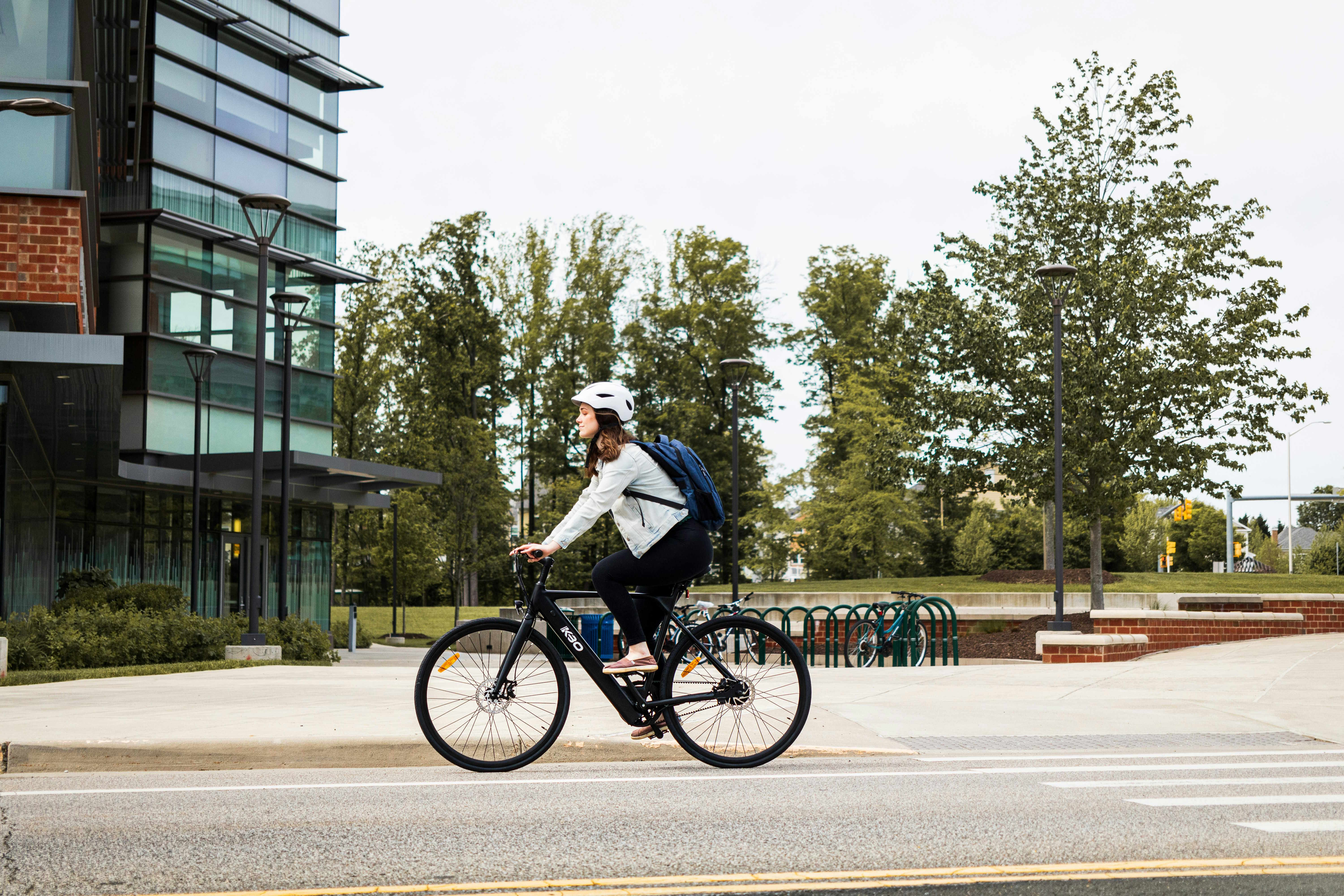E-bikes and electric bicycles: financing options and flexible payments
E-bikes have revolutionized personal transportation, offering an eco-friendly alternative with less physical exertion than traditional bicycles. However, quality electric bicycles often come with substantial price tags, typically ranging from £1,000 to £5,000 or more for premium models. This cost barrier has led to the development of various financing solutions that make these sustainable vehicles more accessible to a broader audience. Understanding the available payment options can help potential e-bike owners make informed decisions that align with their financial circumstances.
What Buy Now Pay Later Options Are Available for E-Bikes?
Buy Now Pay Later (BNPL) services have gained significant popularity in the e-bike market, offering immediate possession with deferred payment. Providers like Klarna, Clearpay, and PayPal Credit have partnered with numerous electric bicycle retailers to offer flexible payment solutions. These services typically allow customers to split payments over periods ranging from 30 days to several months.
Klarna, for example, offers three main options: Pay in 30 days, Pay in 3 interest-free installments, or financing for up to 36 months with interest. Clearpay generally focuses on shorter-term payments, splitting the total into four equal installments paid every two weeks. Some bicycle specialists have also developed their own BNPL schemes, often in partnership with financial institutions, allowing customers to spread costs over 6-12 months with potential interest-free periods.
These options typically require a soft credit check during application, making them accessible to customers with various credit backgrounds. However, eligibility and available terms can vary significantly based on the retailer, the specific e-bike model, and the customer’s credit history.
How Do Loans for Electric Bicycles Without Credit Checks Work?
Some financing options advertise “no credit check” loans for electric bicycles, but consumers should approach these with caution. In most cases, these are not true “no credit check” options but rather use soft credit checks that don’t affect credit scores or have more lenient approval criteria.
True no-credit-check financing typically comes in several forms. Bicycle-specific finance companies may offer in-store financing based on income verification rather than credit history. Some credit unions and community-focused lenders offer e-bike loans with minimal credit requirements, focusing instead on income stability and ability to repay.
Another alternative is secured lending, where the e-bike itself serves as collateral. This reduces the lender’s risk, potentially allowing approval for customers with limited credit history. However, these options often carry higher interest rates compared to traditional financing, reflecting the increased risk to the lender. They may also include additional fees or require substantial deposits.
Consumers should be aware that while these options provide accessibility, they typically come with stricter terms, higher costs over time, and potentially serious consequences for missed payments, including repossession of the e-bike.
What Are the Advantages of Flexible Payment Options for E-Bikes?
Flexible payment plans have significantly increased accessibility to e-bikes across different income brackets. By distributing the cost over time, these options allow consumers to purchase higher-quality models than they might afford with an upfront payment. This access to better quality often translates to longer-lasting, more reliable transportation with enhanced safety features and extended battery range.
From a budgeting perspective, monthly installments can be easier to manage than large one-time expenses, allowing consumers to align their e-bike purchase with regular income patterns. Some finance options even offer promotional periods with zero interest, creating opportunities for cost-conscious buyers to effectively purchase at the cash price while enjoying payment flexibility.
For environmental considerations, financing can make sustainable transportation more accessible. Each e-bike potentially replaces car journeys, reducing carbon emissions and traffic congestion. By lowering the financial barrier to entry, flexible payment options contribute to broader adoption of eco-friendly transportation alternatives.
Many financing programs also include maintenance packages or insurance coverage, providing comprehensive ownership solutions that protect both the investment and the rider.
What Risks Are Associated with Financing E-Bikes?
Despite their convenience, e-bike financing options carry several notable risks. Interest costs can significantly increase the overall price, particularly with longer-term financing. A £2,000 e-bike financed at 15% APR over three years could ultimately cost over £2,500. Additionally, some BNPL services charge late fees that can accumulate quickly if payments are missed.
Financing can also lead to potential debt cycles. The ease of obtaining credit sometimes encourages consumers to purchase more expensive models than they can comfortably afford, leading to financial strain. Missing payments on financed e-bikes negatively impacts credit scores, potentially affecting future borrowing capacity for more significant purchases like homes or vehicles.
Some financing agreements include balloon payments or hidden fees that may not be immediately obvious. These can create unexpected financial burdens when the final payment comes due. Additionally, consumers may face early repayment penalties if they want to settle the balance before the agreed term.
Depreciation presents another challenge—e-bikes, like most vehicles, lose value over time, particularly as battery technology advances. This can result in owing more on the finance agreement than the bike is worth, especially in the early stages of repayment.
Comparison of Popular E-Bike Financing Options
Understanding the differences between various financing providers can help consumers make informed choices about e-bike purchases. The table below compares several common options available in the UK market:
| Provider | Financing Type | Typical Terms | Interest Rate Range | Credit Requirements | Early Repayment Fees |
|---|---|---|---|---|---|
| Klarna | BNPL | 3-36 months | 0% for 3 months, 9.99-19.99% for longer terms | Soft check for short-term, full check for financing | None |
| PayPal Credit | Credit Line | 4 months+ | 0% for 4 months on £99+ purchases, then 21.9% APR | Credit check required | None |
| Cycleplan Finance | Specialized Bike Loan | 12-48 months | 9.9-15.9% APR | Full credit check | Varies by agreement |
| Specialized Bikes Financing | Retailer Finance | 6-36 months | 0% for 12 months, 5.9-12.9% after | Credit score dependent | None on 0% offers |
| ACT Bike Financing | Industry Scheme | 12-60 months | 7.9-19.9% APR | Flexible assessment | Up to 1 month’s interest |
| Credit Union E-Bike Loans | Community Lending | 1-5 years | 4.9-12.9% APR | Membership required, flexible assessment | None |
Prices, rates, or cost estimates mentioned in this article are based on the latest available information but may change over time. Independent research is advised before making financial decisions.
Each financing option serves different needs and financial situations. Retailer-specific financing often provides competitive rates but limits purchasing to specific brands or stores. Third-party BNPL services offer greater flexibility in where you can shop but may have higher costs for longer-term financing. Community-based options like credit union loans frequently offer the most favorable interest rates but require membership and potentially longer approval processes.
Choosing the Right Financing Option for Your E-Bike Purchase
The ideal financing solution depends on individual circumstances including budget constraints, credit history, and intended use of the e-bike. For short-term financing needs, interest-free BNPL options provide excellent value if payments can be managed within the promotional period. Longer-term ownership may benefit from traditional loans with lower interest rates, even if they require more thorough credit assessment.
Before committing to any financing option, prospective e-bike owners should calculate the total cost including all interest and fees, not just the monthly payment. This comprehensive approach to evaluating financing options ensures that the excitement of e-bike ownership isn’t later overshadowed by financial strain. Additionally, considering the warranty period relative to the financing term can help avoid situations where payments continue after the bike requires significant maintenance or replacement.





